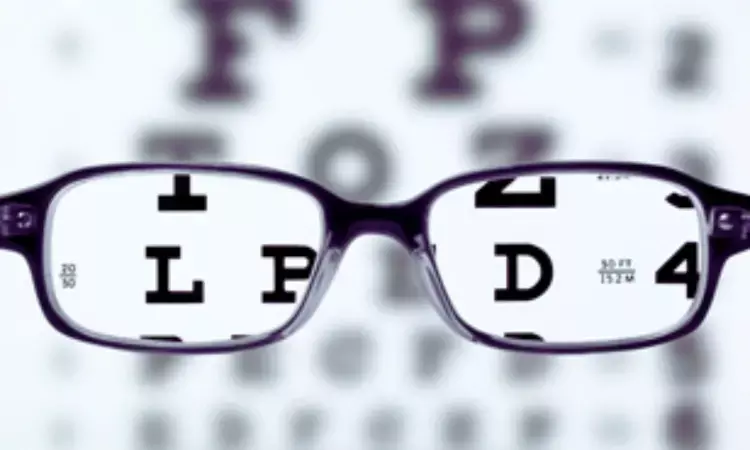- Home
- Medical news & Guidelines
- Anesthesiology
- Cardiology and CTVS
- Critical Care
- Dentistry
- Dermatology
- Diabetes and Endocrinology
- ENT
- Gastroenterology
- Medicine
- Nephrology
- Neurology
- Obstretics-Gynaecology
- Oncology
- Ophthalmology
- Orthopaedics
- Pediatrics-Neonatology
- Psychiatry
- Pulmonology
- Radiology
- Surgery
- Urology
- Laboratory Medicine
- Diet
- Nursing
- Paramedical
- Physiotherapy
- Health news
- Fact Check
- Bone Health Fact Check
- Brain Health Fact Check
- Cancer Related Fact Check
- Child Care Fact Check
- Dental and oral health fact check
- Diabetes and metabolic health fact check
- Diet and Nutrition Fact Check
- Eye and ENT Care Fact Check
- Fitness fact check
- Gut health fact check
- Heart health fact check
- Kidney health fact check
- Medical education fact check
- Men's health fact check
- Respiratory fact check
- Skin and hair care fact check
- Vaccine and Immunization fact check
- Women's health fact check
- AYUSH
- State News
- Andaman and Nicobar Islands
- Andhra Pradesh
- Arunachal Pradesh
- Assam
- Bihar
- Chandigarh
- Chattisgarh
- Dadra and Nagar Haveli
- Daman and Diu
- Delhi
- Goa
- Gujarat
- Haryana
- Himachal Pradesh
- Jammu & Kashmir
- Jharkhand
- Karnataka
- Kerala
- Ladakh
- Lakshadweep
- Madhya Pradesh
- Maharashtra
- Manipur
- Meghalaya
- Mizoram
- Nagaland
- Odisha
- Puducherry
- Punjab
- Rajasthan
- Sikkim
- Tamil Nadu
- Telangana
- Tripura
- Uttar Pradesh
- Uttrakhand
- West Bengal
- Medical Education
- Industry
Visual Impairment Linked to Higher Risk of Early Death and Heart Disease, Study Finds

China: A recent study published in the American Journal of Ophthalmology highlights a strong association between visual impairment (VI) and increased risk of both all-cause and cardiovascular disease (CVD)-related mortality in adults aged 40 years and older.
In the dual-cohort study, Xing-Xuan Dong and colleagues from the School of Public Health, Suzhou Medical College of Soochow University, China, analyzed data from the United States and the United Kingdom, emphasizing the importance of early eye care and integrated health management for adults with visual limitations.
The research combined data from 12,510 US adults enrolled in the National Health and Nutrition Examination Survey (NHANES) from 1999 to 2008 and 95,477 UK adults from the UK Biobank (2006–2010). Researchers applied Cox proportional hazards models to assess the relationship between visual impairment and mortality while controlling for socio-demographic characteristics, lifestyle factors, and overall health status. Competing risk models were further utilized to explore cause-specific mortality, particularly heart disease-related deaths.
The study led to the following notable findings:
- Adults with visual impairment had a significantly higher risk of death compared with those without visual impairment.
- In the US cohort, all-cause mortality was elevated by 63% (HR 1.63).
- In the UK cohort, all-cause mortality was increased by 25% (HR 1.25).
- Heart disease-related deaths were significantly higher among visually impaired adults.
- In the US NHANES cohort, the risk of cardiovascular mortality was 76% higher (HR 1.76).
- Competing risk analysis confirmed a 34% increased risk of cardiovascular mortality (HR 1.34).
The study highlights the potential public health impact of visual impairment, not only on quality of life but also on longevity. The authors suggest that early detection and effective management of visual impairment could play a crucial role in reducing mortality risk. Additionally, they highlight the importance of integrating visual health assessment with cardiovascular risk prevention, noting that adults with visual impairment may represent a vulnerable population that requires comprehensive medical oversight.
Dr. Dong and colleagues note that visual impairment may contribute to higher mortality through several mechanisms, including decreased physical activity, reduced access to healthcare, social isolation, and exacerbation of existing cardiovascular conditions. By addressing these factors proactively, clinicians may improve outcomes for patients with visual challenges.
"The large-scale analysis demonstrates that adults aged 40 years and older with visual impairment face a significantly elevated risk of both all-cause and heart disease-specific mortality. The findings advocate for routine eye examinations, timely intervention for visual disorders, and integrated care strategies to mitigate the heightened health risks associated with visual impairment," the authors concluded.
Reference:
Dong, X., Kai, J., Li, D., Lanca, C., Grzybowski, A., Ke, C., & Pan, C. (2025). Visual Impairment and Risk of All-Cause and Cause-Specific Mortality: Results from Two Prospective Cohort Studies. American Journal of Ophthalmology. https://doi.org/10.1016/j.ajo.2025.09.053
Dr Kamal Kant Kohli-MBBS, DTCD- a chest specialist with more than 30 years of practice and a flair for writing clinical articles, Dr Kamal Kant Kohli joined Medical Dialogues as a Chief Editor of Medical News. Besides writing articles, as an editor, he proofreads and verifies all the medical content published on Medical Dialogues including those coming from journals, studies,medical conferences,guidelines etc. Email: drkohli@medicaldialogues.in. Contact no. 011-43720751
Next Story


